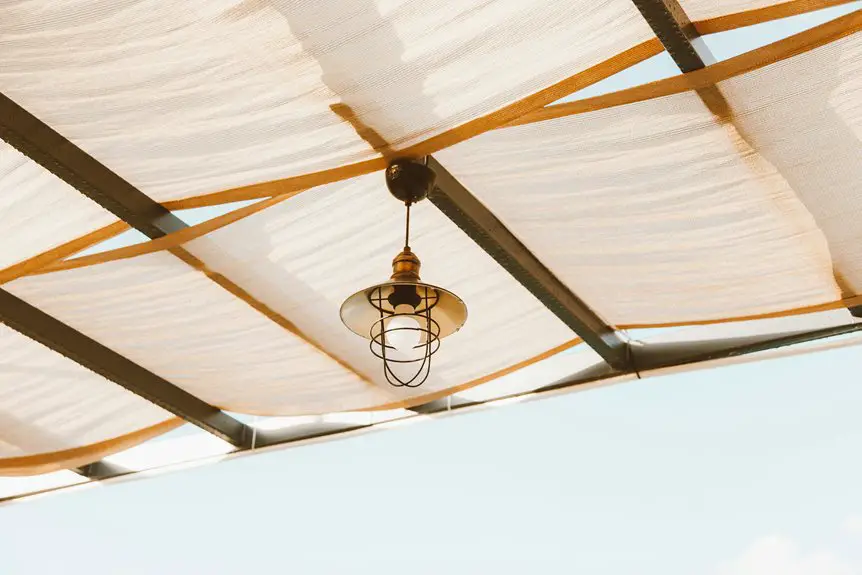You might know Kevlar as a type of aramid fabric, but not all aramids match Kevlar’s unique strength and heat resistance. Kevlar’s molecular structure makes it five times stronger than steel by weight and perfect for bulletproof gear. Other aramid fabrics offer good durability and flexibility but may be more affordable and suited for less intense uses. If you want to understand which material fits your needs best, there’s plenty more to explore.
Table of Contents
Key Takeaways
- Kevlar is a specific type of aramid fiber known for superior strength and heat resistance compared to general aramid fabrics.
- Aramid fabrics include various synthetic fibers with differing properties and are less standardized than Kevlar.
- Kevlar offers about five times the strength of steel by weight, making it ideal for bulletproof and high-impact protection.
- General aramid fabrics may provide more flexibility and cost savings but typically lack Kevlar’s durability under repeated stress.
- Kevlar tends to be more expensive and specialized, while other aramid fabrics are more affordable and widely available for diverse uses.
What Are Aramid Fabrics?
Aramid fabrics are a class of strong, heat-resistant synthetic fibers used in various protective and industrial applications. When you work with aramid fabrics, you benefit from their exceptional strength-to-weight ratio, which makes them ideal for gear like body armor, fire-resistant clothing, and aerospace components.
These fibers resist abrasion, chemicals, and heat, so they keep their integrity under extreme conditions. You’ll find aramid fabrics woven tightly to enhance durability and flexibility, allowing for comfort and mobility.
Since they’re synthetic, aramid fabrics don’t absorb moisture, which helps maintain performance even in wet environments. Understanding these qualities helps you appreciate why aramid fabrics are popular in safety and high-performance industries, providing reliable protection without weighing you down.
The Origin and Composition of Kevlar
Kevlar was developed in the 1960s by chemist Stephanie Kwolek at DuPont, revolutionizing protective materials with its unique chemical structure. You’ll find Kevlar is a type of aramid fiber, composed of long chains of poly-paraphenylene terephthalamide. This molecular arrangement gives it exceptional strength and heat resistance. When you understand Kevlar’s origin and composition, you see why it’s so widely used in body armor, aerospace, and more.
| Aspect | Details |
|---|---|
| Inventor | Stephanie Kwolek |
| Year Developed | 1960s |
| Chemical Type | Poly-paraphenylene terephthalamide |
| Key Property | High tensile strength and heat resistance |
Comparing Strength and Durability
When choosing materials for protection and performance, strength and durability play essential roles. Kevlar, a specific type of aramid fabric, boasts exceptional tensile strength, making it five times stronger than steel by weight.
Kevlar stands out with exceptional tensile strength, offering protection five times stronger than steel by weight.
You’ll find Kevlar excels in resisting impact and abrasion, which is why it’s favored in bulletproof gear. On the other hand, general aramid fabrics offer good strength but can vary widely depending on their specific chemical structure and weave.
While both materials resist heat and chemicals well, Kevlar typically outperforms in long-term durability under stress and repeated use. If you need consistent, high-level protection against extreme forces, Kevlar is your go-to.
But for less demanding applications, other aramid fabrics might provide adequate strength with added flexibility or cost benefits.
Common Uses of Aramid Fabrics and Kevlar
You’ll find these high-performance fabrics in a variety of industries where strength, heat resistance, and durability matter.
When you need protective gear, Kevlar often shows up in bulletproof vests, helmets, and gloves, keeping you safe from impacts and cuts.
Aramid fabrics, including Kevlar, also play an essential role in aerospace and automotive sectors, where they reinforce parts to withstand extreme conditions.
If you work with fire or heat, you’ll appreciate their presence in firefighting suits and heat-resistant clothing.
Additionally, you’ll spot aramid fibers in ropes, cables, and composite materials used for their lightweight strength.
Whether you’re in military, industrial, or sports applications, these fabrics provide reliable protection and performance that you can count on.
Cost and Availability Considerations
When choosing between aramid fabric and Kevlar, you’ll want to evaluate their price differences and how easy it’s to find each material.
Market accessibility can vary depending on your location and supplier relationships.
Plus, supply chain factors might affect both cost and availability more than you expect.
Price Comparison Overview
Although both aramid fabric and Kevlar offer impressive strength and durability, their prices differ considerably due to factors like manufacturing complexity and brand recognition.
When you choose Kevlar, expect to pay a premium because it’s a well-known brand with rigorous quality standards.
Aramid fabric, on the other hand, includes various types made by multiple manufacturers, which generally makes it more affordable and flexible for different budgets.
You’ll find that Kevlar’s cost reflects its specialized applications, such as ballistic protection, whereas aramid fabrics serve broader industrial uses at lower prices.
Keep in mind, though, that price doesn’t always equate to performance; your choice should align with your specific needs and the level of protection or durability required.
Market Accessibility Factors
Price plays a significant role in how easily you can access aramid fabric and Kevlar, but availability also impacts your options.
While Kevlar is a well-known brand of aramid fiber, not all aramid fabrics are Kevlar, affecting both cost and supply.
When considering market accessibility, keep these factors in mind:
- Production scale influences price and availability.
- Specialized manufacturing limits where you can buy Kevlar.
- Aramid fabric variants may be more readily stocked.
- Import restrictions can affect cost and lead times.
- Demand fluctuations cause price volatility and scarcity.
Understanding these elements helps you decide which material fits your budget and project timeline without compromising quality or performance.
Supply Chain Impact
Because supply chains for aramid fabrics and Kevlar involve complex logistics and multiple suppliers, you’ll notice fluctuations in both cost and availability. Kevlar, being a branded aramid, often faces tighter control and higher prices due to limited manufacturers. Generic aramid fabrics might be more accessible but vary in quality and price. Disruptions in raw material sourcing, geopolitical factors, or manufacturing bottlenecks directly affect your procurement timeline and budget. Understanding these dynamics helps you plan better.
| Factor | Kevlar | Generic Aramid |
|---|---|---|
| Cost | Higher due to brand | Generally lower |
| Availability | Limited suppliers | More widespread |
| Quality Control | Strict and consistent | Variable |
| Lead Time | Longer due to exclusivity | Shorter and flexible |
| Supply Risk | Higher due to concentration | Lower with diversification |
Choosing the Right Material for Your Needs
How do you decide between aramid fabric and Kevlar when both offer impressive strength and durability?
It really depends on your specific needs.
Consider these key factors to make the right choice:
- Application type: Kevlar excels in ballistic protection, while general aramid fabrics suit industrial uses.
- Weight: Kevlar is lighter, ideal for wearable gear.
- Flexibility: Aramid fabrics may offer more flexibility for certain designs.
- Cost: Kevlar tends to be pricier due to brand and performance.
- Environmental resistance: Evaluate exposure to UV, chemicals, or moisture.
Frequently Asked Questions
Can Aramid Fabrics Be Recycled or Reused?
You can recycle or reuse aramid fabrics, but it’s tricky due to their chemical structure. You’ll often need specialized facilities to break them down safely, so consider contacting local recycling centers for proper guidance and options.
How Do Aramid Fabrics React to Extreme Temperatures?
Imagine knights in shining armor—aramid fabrics handle extreme temperatures like pros. You’ll find they resist heat up to about 500°F, won’t melt, and stay strong, making them perfect for tough, fiery conditions.
Are There Any Health Risks Associated With Handling Kevlar?
You won’t face serious health risks handling Kevlar, but avoid inhaling dust or fibers during cutting or sanding. Always wear protective gear to prevent skin irritation or respiratory issues from airborne particles.
What Environmental Impact Does Kevlar Production Have?
Think of Kevlar production as weaving a hidden storm—its chemical processes release pollutants and consume energy. You’ll want to balance its strength with environmental costs, pushing for greener methods to protect our planet while using this powerful material.
How Do Aramid Fabrics Perform in Waterproofing Applications?
You’ll find aramid fabrics aren’t naturally waterproof, but you can treat them with coatings or laminates to enhance water resistance. They’re durable and strong, making them suitable for protective waterproof gear when properly finished.
- Is Kevlar Fabric Toxic? Health and Safety Considerations - June 21, 2025
- Innegra and Kevlar: Comparing High-Tech Composite Fibers - June 21, 2025
- Inflatable Airplane Kevlar Fabric: High-Altitude Applications - June 21, 2025







